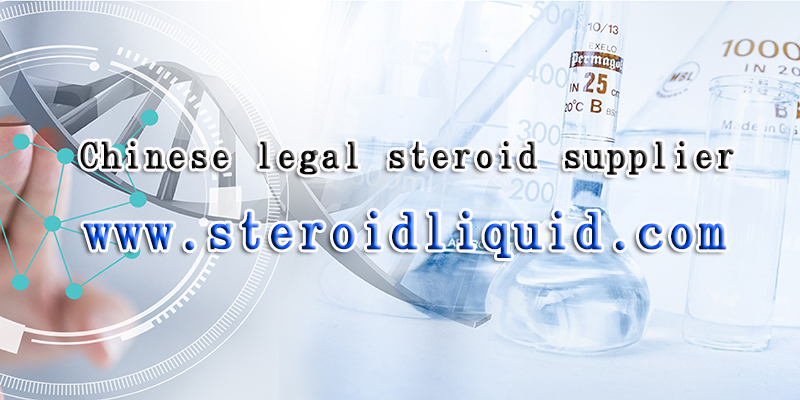categorias
- Blog (101)
Naturally produced by the liver, IGF-1 is a hormone similar in structure to that of insulin, hence its name. During childhood it is one of the primary hormones responsible for growth and remains a powerful precursor to cell growth in adults – something bodybuilders and athletes have naturally taken an interest in!
When it comes to its effect on the body, IGF-1 shares many of the same traits as human growth hormone (HGH). This is to be expected; HGH is, na verdade, a precursor to IGF-1, signaling for its release when the HGH binds to its receptors. It’s the IGF-1 that stimulates muscle growth and promotes protein anabolism.
IGF-1 is highly anabolic and will promote both muscle hypertrophy (growth) and hyperplasia (formation of new muscle cells). While the level of muscle growth from IGF-1 use is likely to be less than that of most anabolic androgenic steroids, the hyperplastic effects of IGF-1 are highly desirable and cannot be achieved from steroids which merely hypertrophies the existing muscle tissue.
In addition and of particular interest to athletes, IGF-1 has a positive effect on connective tissue and cartilage repair making it a superb compound to run during rehab and heavy training phases within the year.
Unlike HGH, IGF-1 doesn’t appear to directly cause heightened fat mobilization. This is interesting because many users of the hormone do note its apparent ability to reduce or maintain body fat levels during periods of high-calorie consumption.

IGF-1 Long R3
IGF-1 Long R3, or IGF-1 LR3, is a form of IGF that has been chemically altered with changed amino acids. It consists of 83 amino acids with a substation of Arg(R) for the Glu(E) at position three, hence, the name R3. The altercations enable it to avoid binding to proteins in the body, which allows it to have a longer half-life.
IGF-1 LR3 is more potent than the regular IGF-1 because of the decreased binding of Long R3 IGF-1 to IGF binding proteins. Its main purpose is to increase the biological activity of IGF.
Essentially, when IGF-1 LR3 is active in the body, it functions differently in different types of tissues. Por exemplo, no tecido muscular, it makes the muscle more sensitive to insulin’s effects, such as a reduction in fat storage. But while IGF-1 LR3 helps fat reduction, a person using it will experience weight gain because of the increase in pure-muscle weight.

Cycles, doses, and results
The first thing that must be said is that IGF-1 is an advanced hormone and should only be considered by those with several AAS cycles under their belt.
IGF-1 will NOT produce the sort of muscle mass or strength gains experienced from using steroids. If you’re looking to get the most bang-for-your-buck, try a Dianabol or testosterone cycle instead. IGF-1 does, Contudo, provide several unique qualities which are highly prized by many advanced bodybuilders and athletes.
As mentioned, IGF-1 can do something which no steroid can – increase the actual number of muscle cells you possess via hyperplasia. No longer are trainers limited by their genetics; IGF-1 ‘levels-up’ the athlete’s potential by increasing the number of muscle cells which can be further hypertrophied through training and steroid cycles.
For athletes, IGF-1 provides a hard to detect hormone that unmistakeably aids performance, reduces recovery time and pushes the envelope for those who are already at the limits of their genetic potential.
A good starting point for dosing IGF-1 LR3 would be 40mcg per day. Strangely (and unwisely in my view) it is isn’t uncommon to see a daily dose of ~100mcg recommended by other online resources, yet in my experience, this sort of dose is totally unnecessary and I wouldn’t recommend a dose higher than 100mcg for even the most advanced trainers with considerable IGF-1 experience.
IGF-1 LR3 should be injected intramuscularly and given its longer half-life, it’s not necessary to site inject, although many trainers do choose to inject post workout into the muscle group they’ve just trained.
A typical IGF-1 cycle will last four weeks and will yield the best results when stacked with anabolic androgenic steroids which amplify its effects. The thing to remember with IGF-1 is you’re unlikely to see specular results; it’s the cherry on the cake for advanced trainers who are happy to see half a pound to a pound of quality muscle gained per week and expectation of long-term benefits.
Another popular and effective use of IGF-1 is as a bridge into PCT. When a trainer ceases a steroid cycle their natural testosterone production is usually significantly suppressed – a catabolic state that should be rectified as quickly as possible from following a proper PCT protocol. By timing the IGF-1 cycle to start a week before the end of a steroid cycle we can provide anabolic cover during PCT and it isn’t unusual for trainers to continue to see decent gains during their PCT when following this protocol.
When administering IGF-1 DES the doses used are fairly similar, with 20-40mcg per day a wise starting point. Because IGF-1 DES is usually injected pre-workout into the target muscle group it is common to split the dose so both sides of the body receive an equal amount, por exemplo. 20mcg into the left bicep and 20mcg into the right.